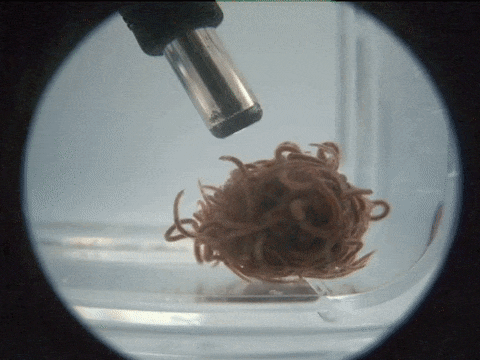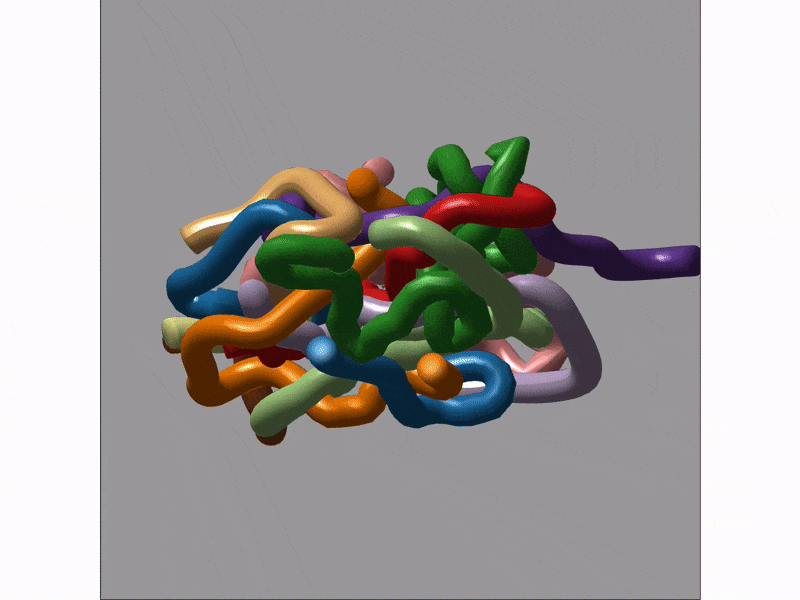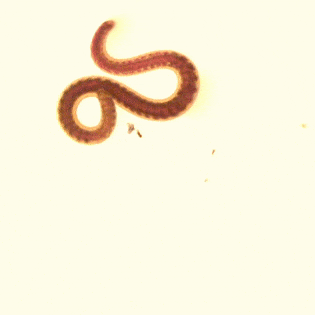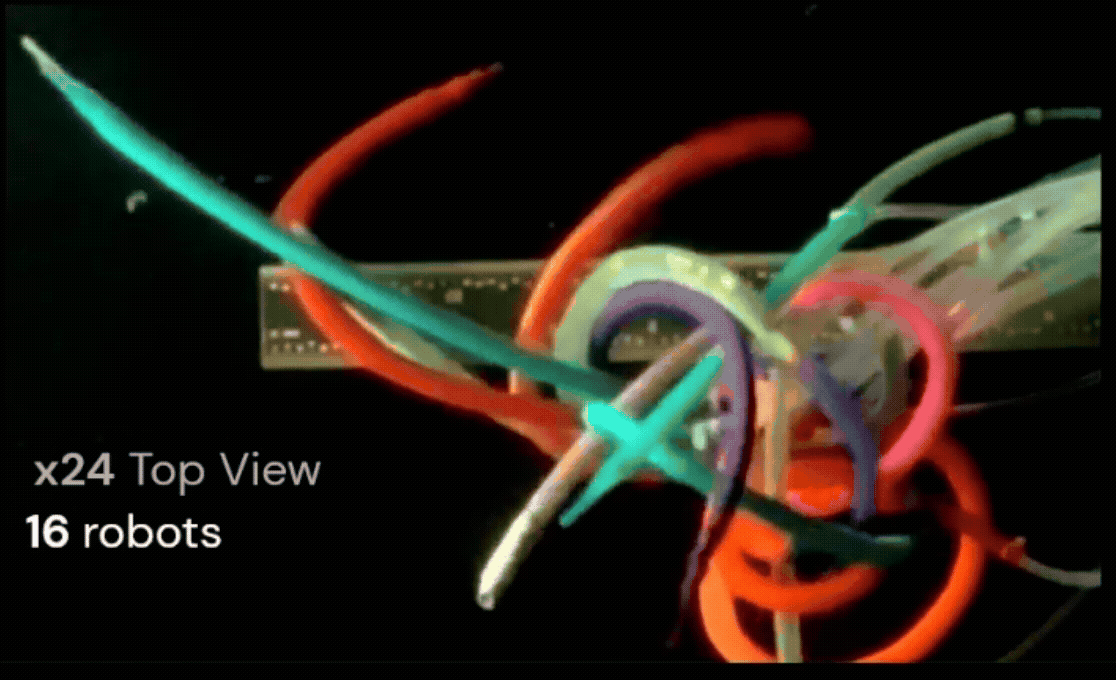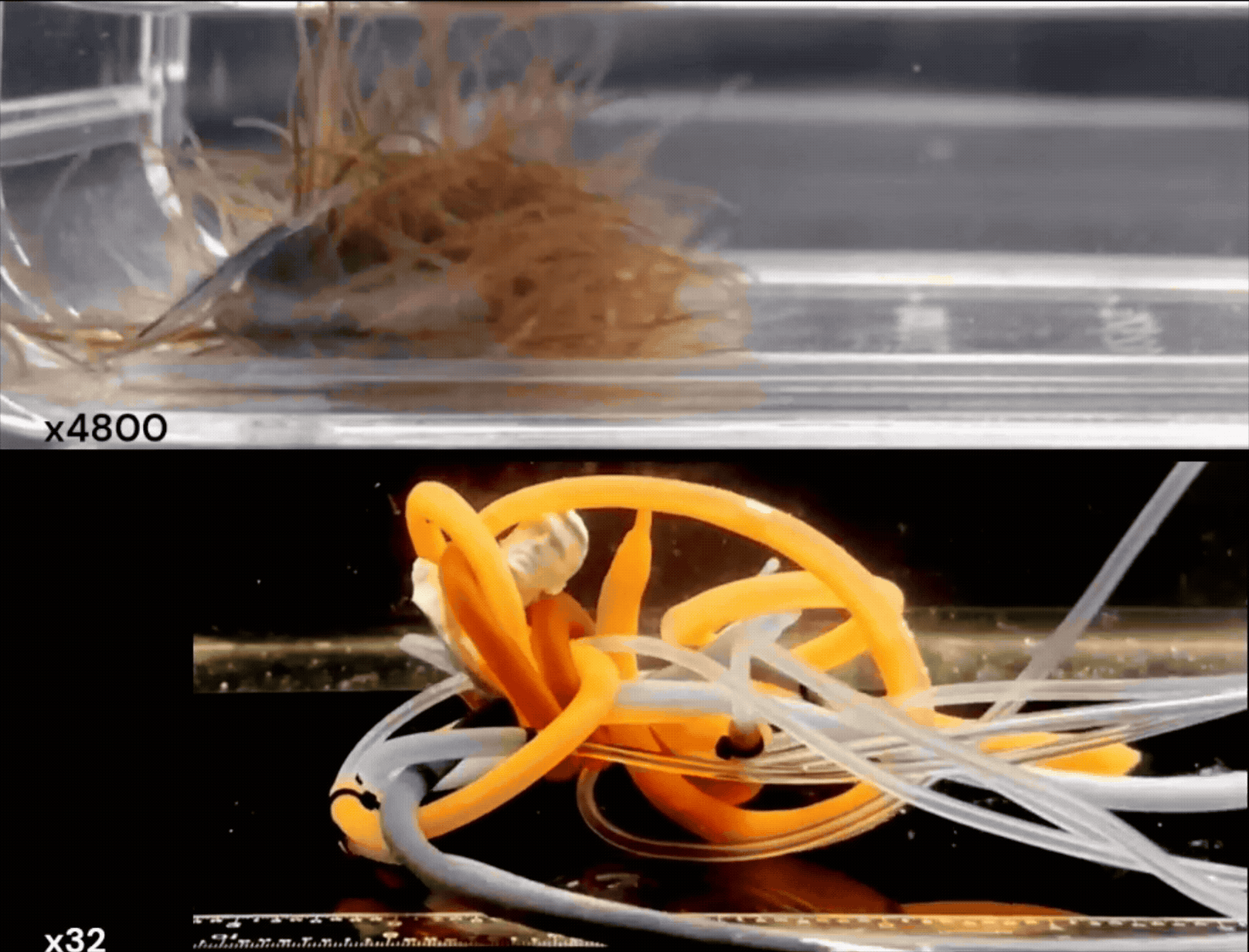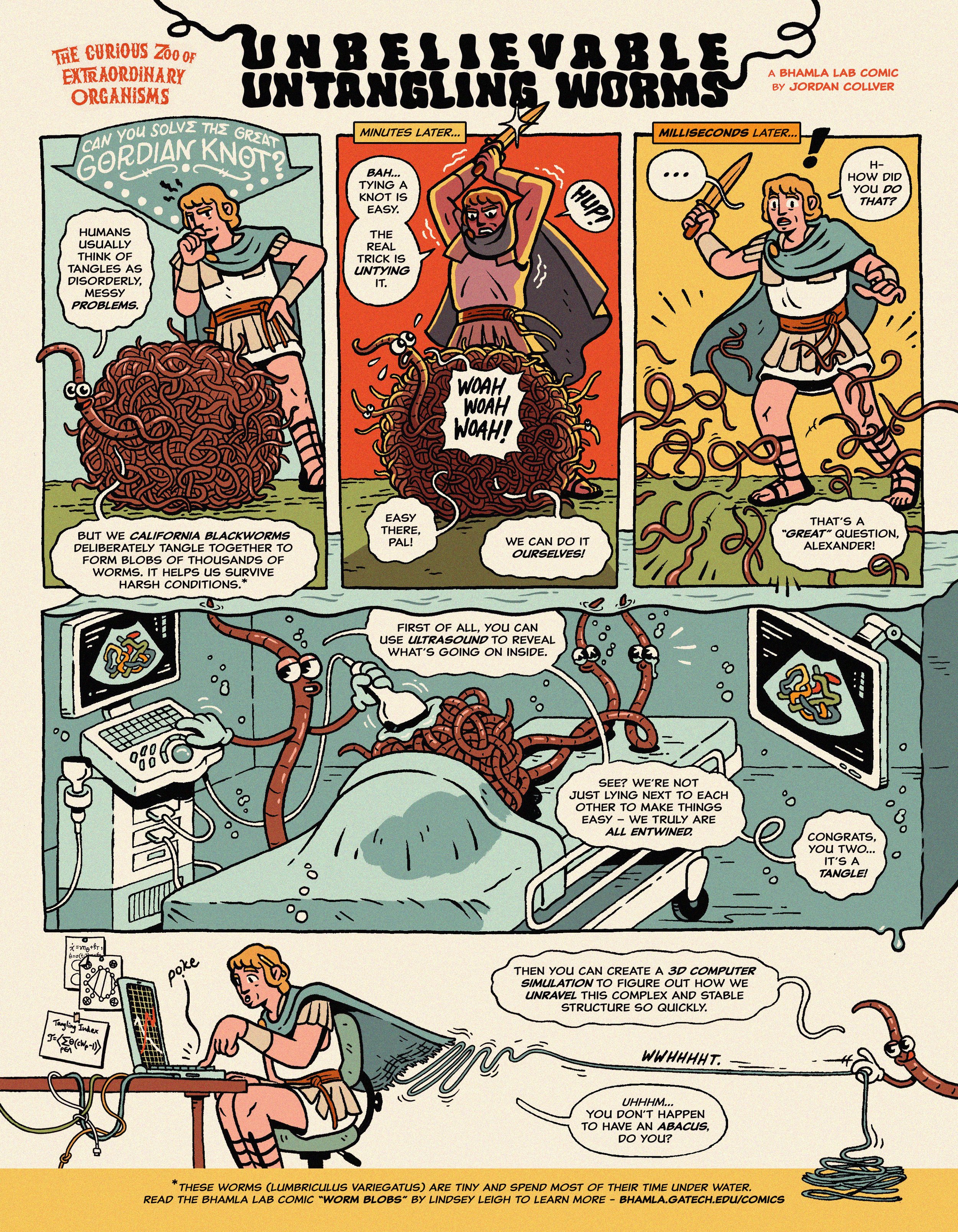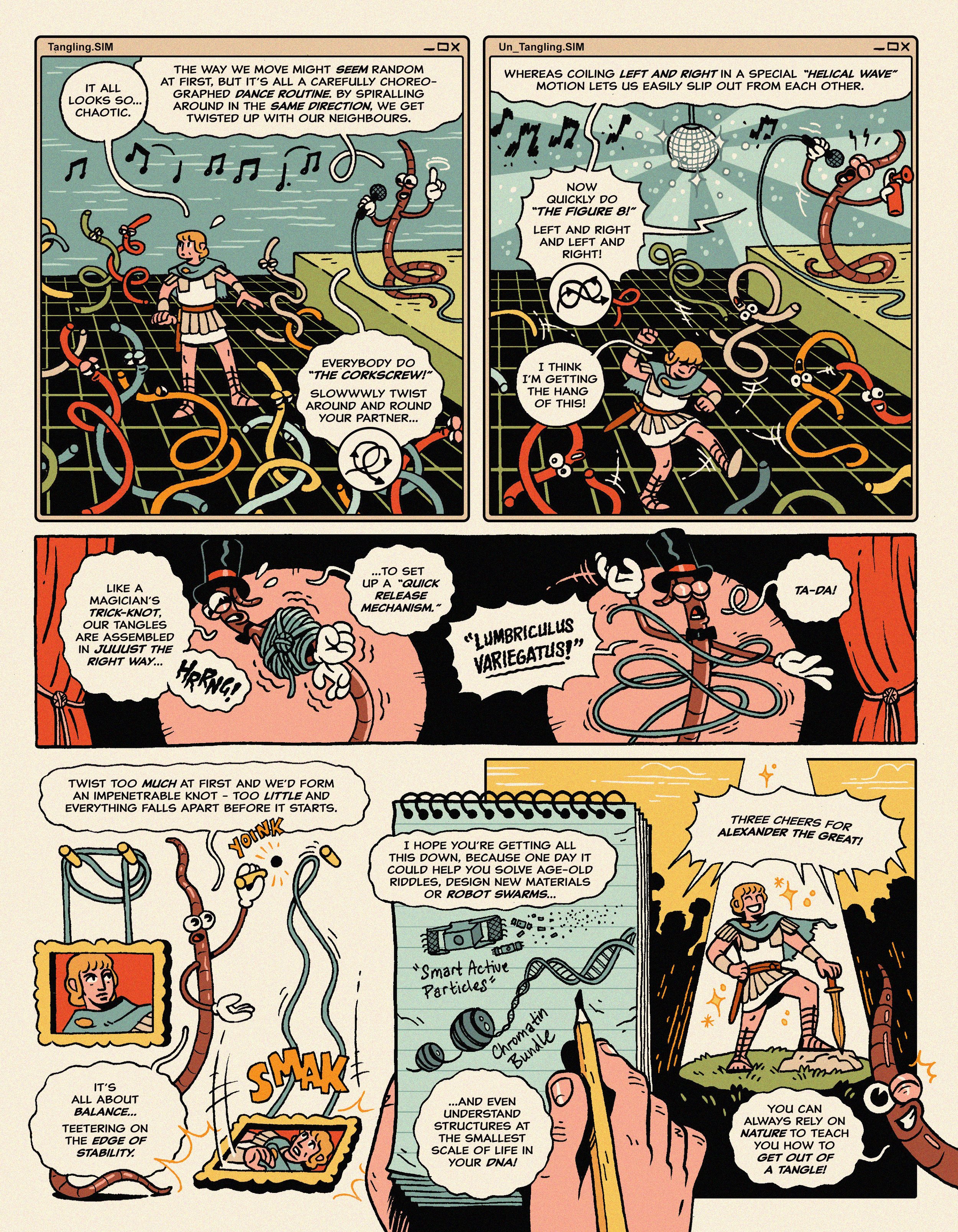Living Worm Tangles
KNOT impossible: How worms solve a gordian knot problem
Imagine a tangled mess of computer cables or headphones perfectly unraveling in less than a second… That’s what these aquatic blackworms can do.
“What’s striking is these tangled structures are extremely complicated. They are disordered and complex structures, but these living worm structures are able to manipulate these knots for crucial functions.”
This is where everyday encounters with knots and tangles meet the world of mathematics, physics, and mechanics. Materials that make us and surround us, from DNA to yarn, are all about managing a tangle. Yet, we're still novices when it comes to controlling these snarls. This is evident every time we struggle with stubborn knots and complex tangles.
Enter the aquatic blackworm, Lumbriculus variegatus, nature's little Houdini. Contrary to our understanding of knots, these worms have cracked the code for ultrafast untangling. Inspired by this, we've used both experiments and theory to unlock the secrets behind their swift escape artistry.
Surprisingly, we found that even similar worm movements can either tangle or untangle. Unraveling these topological rules could revolutionize the way we design new adaptive and topological materials, with the humble blackworm as our curious guide.
“It’s a very minimal model, in which each worm basically runs its own program of helical movements, and how fast they switch directions. You can think of them as having two gears: a slow gear, which allows them to tangle, and a fast gear, which lets them untangle.”
A blackworm blob untangling in milliseconds. Credit. Harry Tuazon, Bhamla Lab at Georgia Tech
“I was shocked when I pointed a UV light toward the worm blobs and they dispersed so explosively.”
Blackworm tangle. Harry Tuazon, Bhamla Lab at Georgia Tech.
This project has been featured in Science, NSF, SCientific American and more.
This project was featured on Germany’s 3sat Nano news!
Major questions
How can we analyze the 3D structure of worm tangles?
How do specific worm movements contribute to tangle formation?
What key mechanism allows the worms to rapidly untangle?
What lessons from these living tangles can we apply for engineering applications?
What we’ve discovered
Unlocking the 3D Structure of Worm Tangles
Using ultrasound imaging, we unraveled the intricate 3D structure of living worm tangles for the first time. This insight uncovers how the contact and intertwining between worms form their cohesive topologically tangled state.
Understanding Worm Tangles through Topological Analysis
We've developed a method called "contact link" to distinguish different forms of worm interactions in tangled structures, providing a clearer representation of tangle states. This lets us compare experimental and simulated worm tangles and can potentially be applied to other tangled systems.
Decoding the Dynamics of Tangling and Untangling
Observing the helical movement patterns during tangling and untangling allowed us to develop mathematical models that reveals a new `helical-wave-resonance’ mechanism.
Critical Tangles and the Edge of Stability
In our mathematical exploration of worm dynamics, we identified a unique phase space of tangles. Here, blackworms sit precisely on the brink of stability, suggesting they strategically form tangles near the boundary between tangled and untangled states, similar to a famous `picture-hanging puzzle’.
Classifying Entangled Matter
We create models for classifying the complexity of entangled matter which can be applied to passive systems, like bird nets, and active systems, such as our worm blobs.
From Worm Dynamics to Adaptive Materials
Understanding the mechanical principles of tangling and untangling in worms opens doors to applications in other tangled systems like DNA and polymers. We can use the blackworm’s extraordinary control as inspiration for designing topologically tunable active materials and flexible robot collectives.
Spiral Predation
We describe a spiral “entombment” predation strategy, where Helobdellid leeches latch onto blackworms with their anterior sucker and envelop them in a spiral cocoon. Quantitative analysis shows that larger leeches succeed more often in entombing prey, while longer worms tend to escape.
Soft Robots that Coil and Uncoil on Command
We designed slender silicone robots coil when pressurized and uncoil when pressure drops, thanks to an asymmetric inner chamber. A custom controller runs them in air or underwater (using syringes for hydraulic actuation), giving repeatable worm-like motion.
They Entangle and Move as One
Pressurize a handful and they curl into a blob on their own, then locomote together, it’s smoother when a few keep a light “wiggle” to cut friction. In our tests, robot blobs advanced with pushers at the back, showing a simple route from knots to team motion.
Robots that Carry Cargo
If cargo is present, the blob wraps it, moves it as a team, then releases on cue by depressurizing. Robots carried a 3D-printed object this way (and worms did the same with a mesh).
Read the paper
Individual and Collective Behaviors in Soft Robot Worms Inspired by Living Worm Blobs. IEEE (2025).
Leeches Predate on Fast-Escaping and Entangling Blackworms by Spiral Entombment. ICB (2024).
Ultrafast reversible self-assembly of living tangled matter. Science (2023).
Worm Blobs as Entangled Living Polymers: From Topological Active Matter to Flexible Soft Robot Collectives. Soft Matter (2023).
What others are saying
“This observation may seem like a mere curiosity, but its implications are far-reaching. Active filaments are ubiquitous in biological structures, from DNA strands to entire organisms.
These filaments serve myriads of functions and can provide a general motif for engineering multifunctional structures and materials that change properties on demand. Just as the worm blobs perform remarkable tangling and untangling feats, so may future bioinspired materials defy the limits of conventional structures by exploiting the interplay between mechanics, geometry, and activity.”
Harry Tuazon’s blackworm tangle image was featured on the inner cover of Soft Matter!
